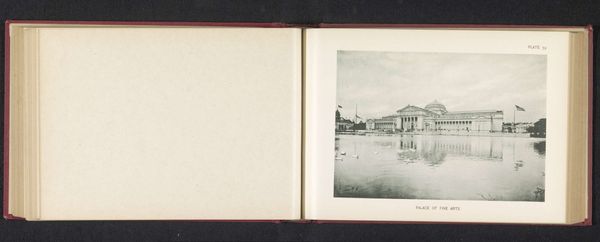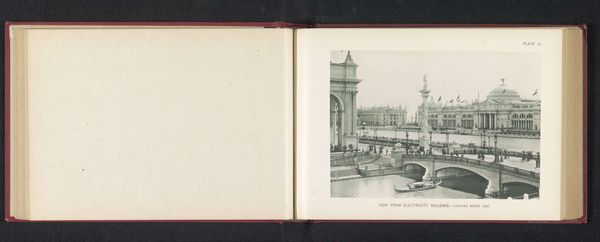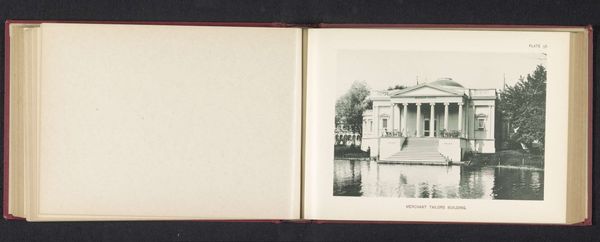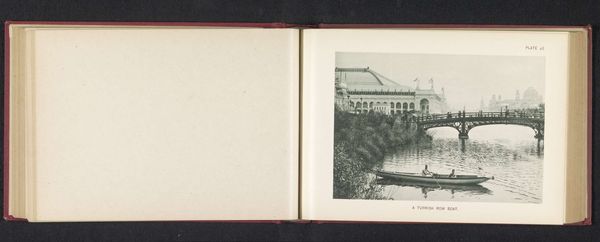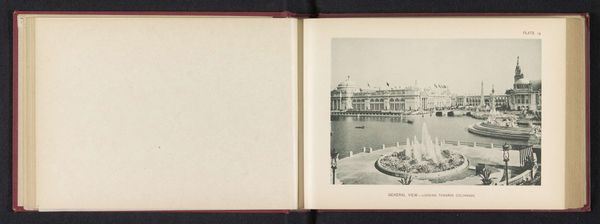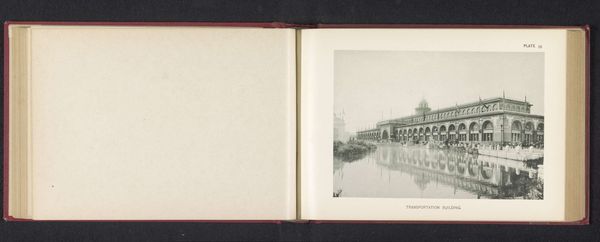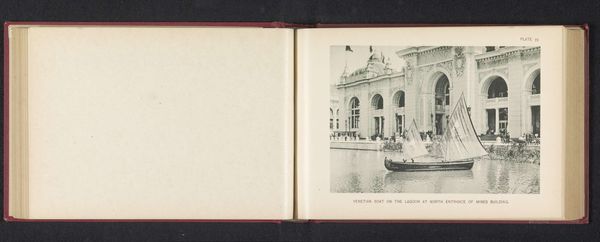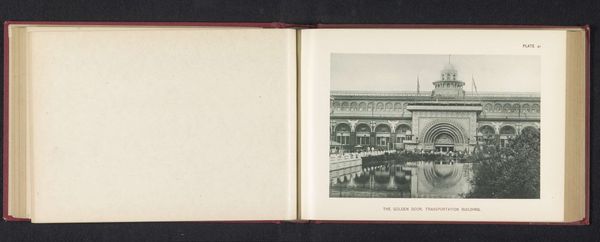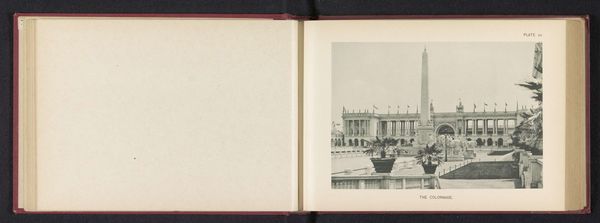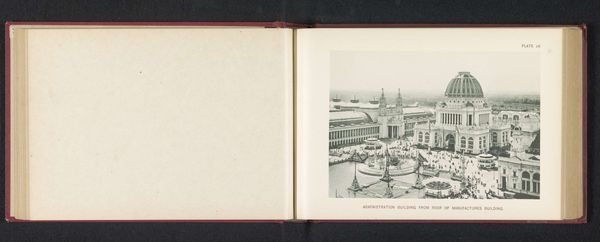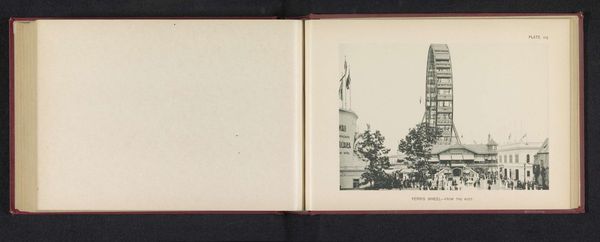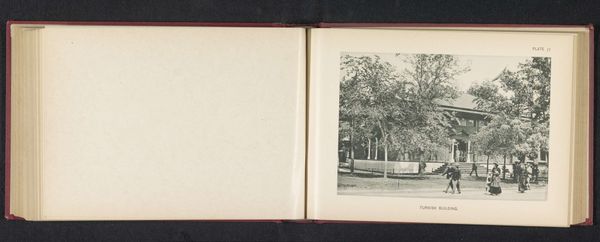
Man in een roeiboot die eenden voert bij de World's Columbian Exposition in Chicago in 1893 1893
Dimensions: height 133 mm, width 190 mm
Copyright: Rijks Museum: Open Domain
Editor: This photograph by Charles Dudley Arnold, taken in 1893, depicts a man in a rowboat feeding ducks at the World's Columbian Exposition in Chicago. The water seems to dominate the frame, and it creates such a serene scene. How do you interpret the photograph within the context of the Exposition? Curator: Well, it's easy to get caught up in the tranquility. However, let's consider the Columbian Exposition itself. It was a carefully constructed symbol of American progress and optimism, especially in the wake of economic depression. So, a seemingly innocuous image of a man feeding ducks? Editor: It's… staged? Curator: Perhaps "staged" is too strong, but definitely curated. This photo normalizes and humanizes this utopian space for the masses. Look how calm and pleasant it is. We need to remember that these representations often glossed over significant social inequalities. Think about who was excluded, both within America and in its representation of other nations at the Expo. Does it make you look at the photograph any differently? Editor: It does. It’s like this calm pond, a simplified version of life for some at this fair, not the whole picture. A piece of selective evidence if you will. Curator: Precisely. And photographic evidence at that. Photography was emerging as a powerful tool for shaping public perception. The very act of capturing this particular moment reinforces a specific narrative about the Exposition. Editor: So it becomes less about ducks and more about controlling the image. Curator: Exactly. The Columbian Exposition was a world's fair, meant to project an image of prosperity and advancement. Seeing these everyday people experiencing it invites you to see it as part of your world. I guess I see the whole project differently. Editor: I'll definitely carry that context when thinking about these kinds of photographs from now on.
Comments
No comments
Be the first to comment and join the conversation on the ultimate creative platform.
